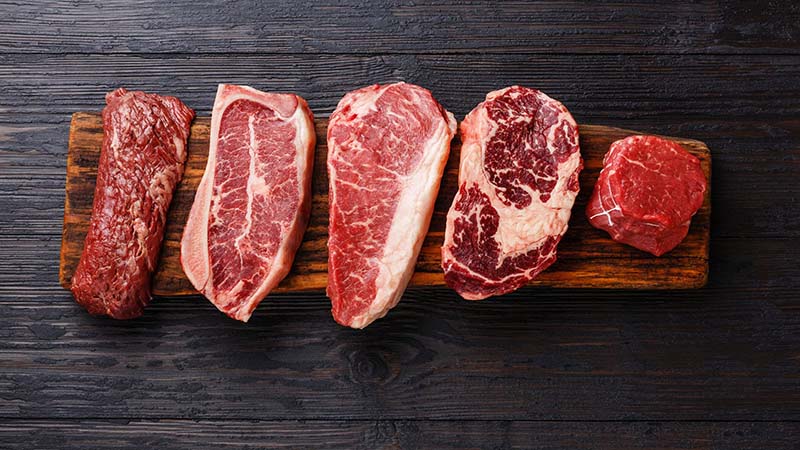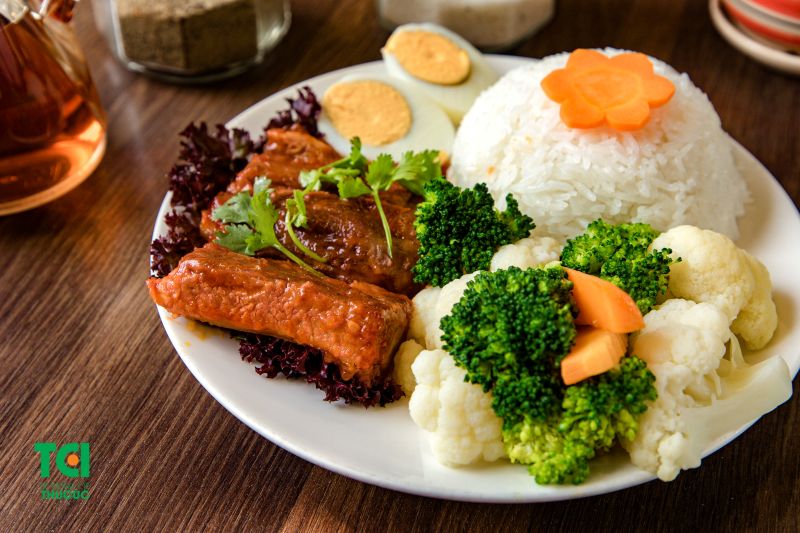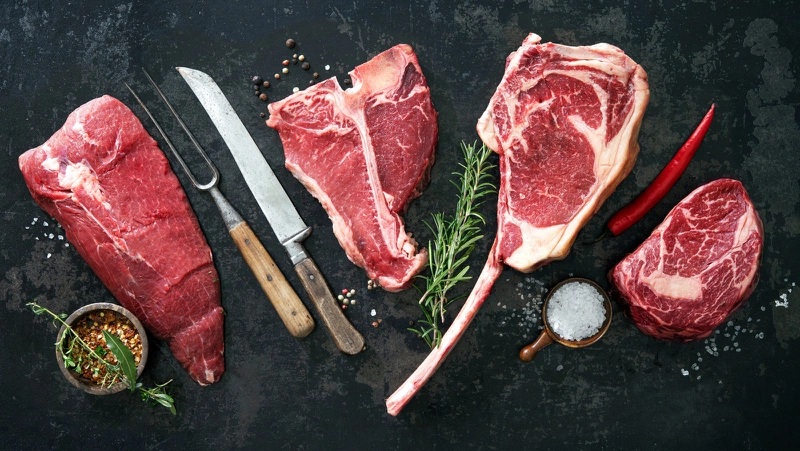Red meat has long been a staple in diets around the world. Known for its rich flavor, high nutritional value, and versatility in cooking, red meat can be a valuable part of a healthy diet when consumed in moderation. However, to make informed dietary choices, it’s important to understand what red meat is, the different types available, and how it fits into daily nutrition.
1. What Is Red Meat?
Red meat (meat from mammals) is typically defined by its color before cooking, which is usually a deep red or pink. This pigmentation is due to the presence of myoglobin — a protein that carries oxygen to muscle tissues. The higher the myoglobin content, the darker the meat. This distinguishes red meat from white meats such as poultry and most seafood, which have lower levels of myoglobin and appear paler in color.
In many cultures, meat from mammals plays a central role in traditional dishes, from Western-style grilled steaks to the iconic Vietnamese beef pho. But red meat is not a single product — it encompasses several types, each with unique nutritional properties and culinary uses.

Red meat is not only a staple in family meals but also plays an important role in the culinary traditions of many countries.
2. Common Types of Red Meat
2.1. Beef
Beef is perhaps the most widely recognized form of red meat. Derived from cattle, beef is rich in protein, iron, zinc, and vitamin B12 — nutrients essential for muscle development and red blood cell production. Cuts like tenderloin, brisket, and ribs offer diverse textures and flavors, suitable for grilling, stewing, or stir-frying. Its nutritional density makes beef a favored choice for those needing energy and nutrient replenishment.
2.2. Pork
Although often lighter in appearance, pork is classified as red meat based on its biological characteristics. Pork is the most commonly consumed meat in Vietnam and many other parts of the world. Cuts like pork belly, shoulder, and trotters are used in a wide range of dishes, from caramelized pork to grilled ribs. Pork is a good source of protein and healthy fats, making it a reliable energy booster.

Pork can be prepared in a variety of delicious dishes.
2.3. Goat Meat
Goat meat is less common but holds cultural significance in various regions, especially mountainous areas and the Middle East. It has a darker color and a slightly gamey taste compared to beef and pork. Goat meat is lean, low in saturated fat, and high in protein — making it a healthier alternative for those managing cholesterol levels. In Vietnam, it is often prepared in dishes like grilled goat, goat hotpot, or stir-fried goat with lemongrass.
2.4. Lamb
Lamb, popular in Western and Central Asian cuisine, is another nutritious type of meat from mammals. Its robust flavor pairs well with herbs and slow-cooking techniques such as roasting or braising. Lamb provides iron, zinc, and omega-3 fatty acids, which are beneficial for heart health. Dishes like lamb kebabs or lamb stew highlight its rich taste and tenderness.
2.5. Horse Meat
Though culturally less accepted in many countries, horse meat is consumed in places like Japan, Kazakhstan, and parts of Europe. It is dark red, firm, and high in protein but low in fat. In Japan, it is often served raw as sashimi, while in Europe it may appear in hearty stews. While not common in Vietnam, horse meat remains an important part of the meat from mammals category.
3. Nutritional Benefits of Red Meat
Meat from mammals is a rich source of high-quality protein and heme iron — a form of iron that is more easily absorbed by the body compared to plant-based sources. It also contains essential B vitamins, particularly B12, which support energy production and nervous system health. Regular but moderate consumption can help maintain muscle mass, prevent anemia, and support overall vitality.

Despite its many benefits, meat from mammals should be consumed in moderation.
4. Important Considerations
Despite its nutritional benefits, excessive consumption of red meat — especially processed types such as sausages and cured meats — has been linked to an increased risk of heart disease and certain cancers. Therefore, health experts recommend moderation, emphasizing portion control and variety in protein sources. Balancing meat from mammals with vegetables, legumes, and whole grains is key to a heart-healthy diet.
Red meat includes a variety of options such as beef, pork, goat, lamb, and even horse meat — each offering distinct flavors and nutritional profiles. Understanding the types and benefits of meat from mammals can help individuals build a diverse, balanced diet. Consuming red meat in moderation and with proper preparation methods allows you to enjoy its benefits while supporting long-term health.








